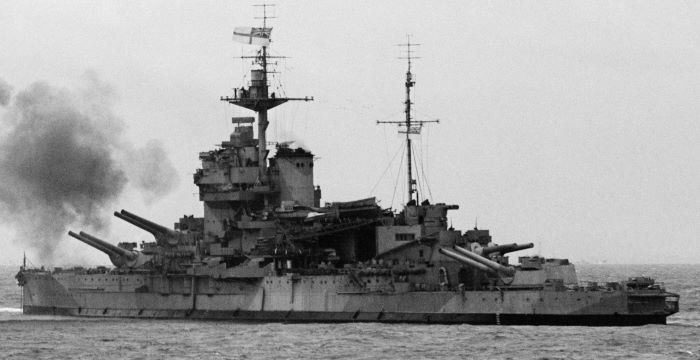|
HMS WARSPITE
Queen Elizabeth Class Battleship
This page is not meant to be a comprehensive history of HMS WARSPITE., but a record of sailors of the ROYAL CANADIAN NAVY who served in her, photos they took and stories they may have shared with their families.
HMS WARSPITE was one of five Queen Elizabeth-class battleships built for the Royal Navy during the early 1910s. Completed during the First World War in 1915, she was assigned to the Grand Fleet and participated in the Battle of Jutland. Other than that battle, and the inconclusive Action of 19 August, her service during the war generally consisted of routine patrols and training in the North Sea. During the interwar period the ship was deployed in the Atlantic Ocean and the Mediterranean Sea, often serving as flagship, and was thoroughly modernised in the mid-1930s.
During the Second World War, WARSPITE was involved in the Norwegian Campaign in early 1940 and was transferred to the Mediterranean later that year where the ship participated in fleet actions against the Royal Italian Navy (Regia Marina) while also escorting convoys and bombarding Italian troops ashore. She was damaged by German aircraft during the Battle of Crete in mid-1941 and required six months of repairs in the United States. They were completed after the start of the Pacific War in December and the ship sailed across the Pacific to join the Eastern Fleet in the Indian Ocean in early 1942. WARSPITE returned home in mid-1943 to conduct naval gunfire support as part of Force H during the Italian campaign. She was badly damaged by German radio-controlled glider bombs during the landings at Salerno and spent most of the next year under repair. The ship bombarded German positions during the Normandy landings and on Walcheren Island in 1944, despite not being fully repaired. These actions earned her the most battle honours ever awarded to an individual ship in the Royal Navy. For this and other reasons, WARSPITE gained the nickname the "Grand Old Lady" after a comment made by Admiral Sir Andrew Cunningham in 1943 while she was his flagship.
When she was launched in 1913 the use of oil as fuel and untried 15-inch guns were revolutionary concepts in the naval arms race between Britain and Germany, a considerable risk for Winston Churchill, then First Lord of the Admiralty, and Admiral of the Fleet Sir Jackie Fisher, who had advocated the design. However, the new "fast battleships" proved to be an outstanding success during the First World War. Decommissioned in 1945, WARSPITE ran aground under tow to be scrapped in 1947 on rocks near Prussia Cove, Cornwall, and was eventually broken up nearby.
They shall not be forgotten
|


